Late this afternoon, I decided to take the plunge and start carving the seat for the shave horse. Of course, first, I had to sharpen my scorp.
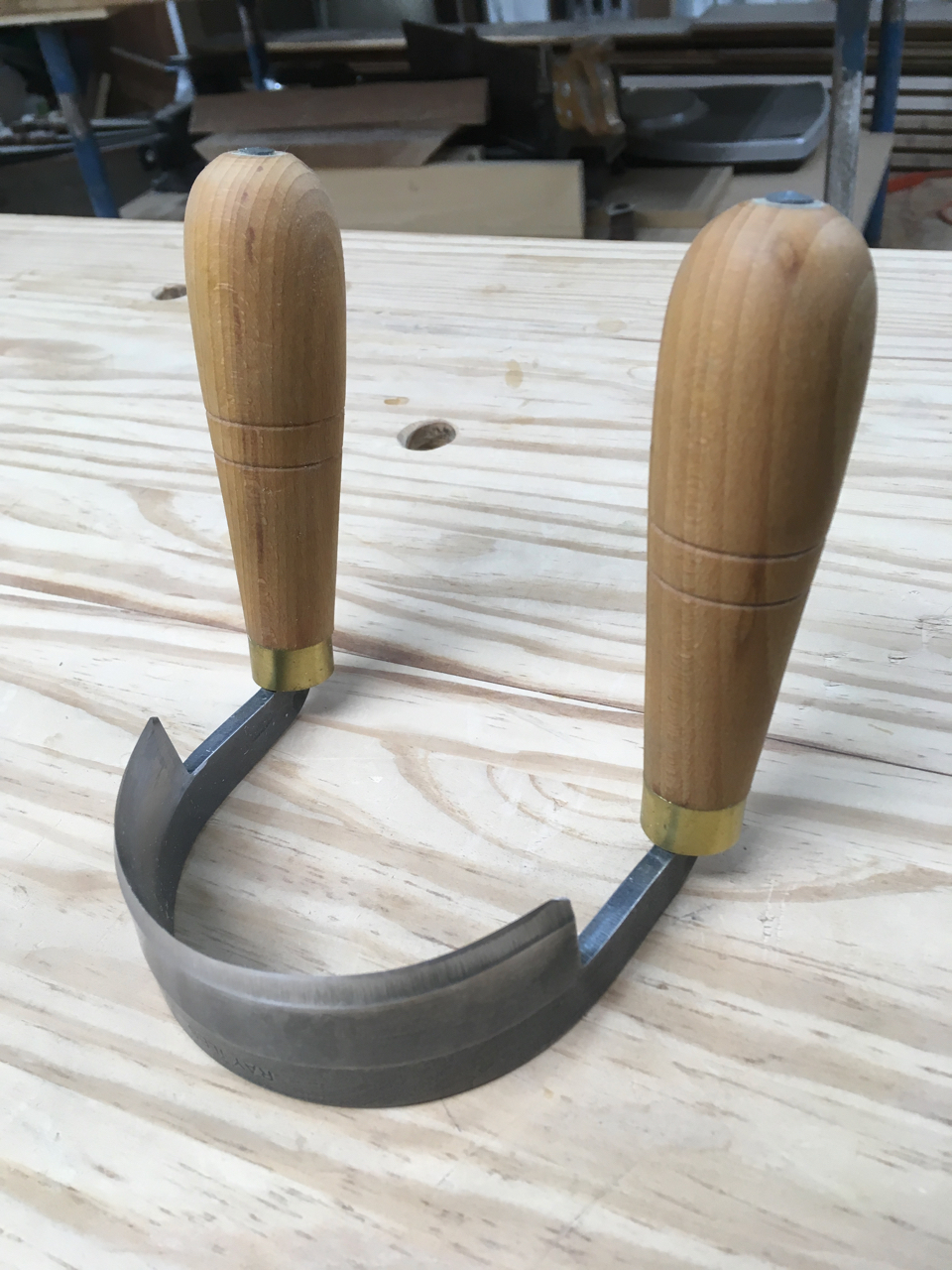
The scorp came from the factory ‘kinda sharp’, and it had a hollow grind on the edge, though I didn’t realize that at first. I figured it out when I had the grinder set up properly and the edge of the grinding wheel fit into the hollow grind already there.
To sharpen the scorp, I followed the technique Curtis Buchanan shows in his video on YouTube. I can’t thank Curtis enough for the many videos he has provided. They are a wealth of information and he is an outstanding communicator. It took me a while to apply Curtis’s sharpening technique to my scorp, and after I thought it was sharp, I wasn’t really sure. I figured I’d get the seat to the point where I needed to use it and see how it goes.
I started by putting the blank on my blank holding fixture, and getting out my Jason Lonon adze.
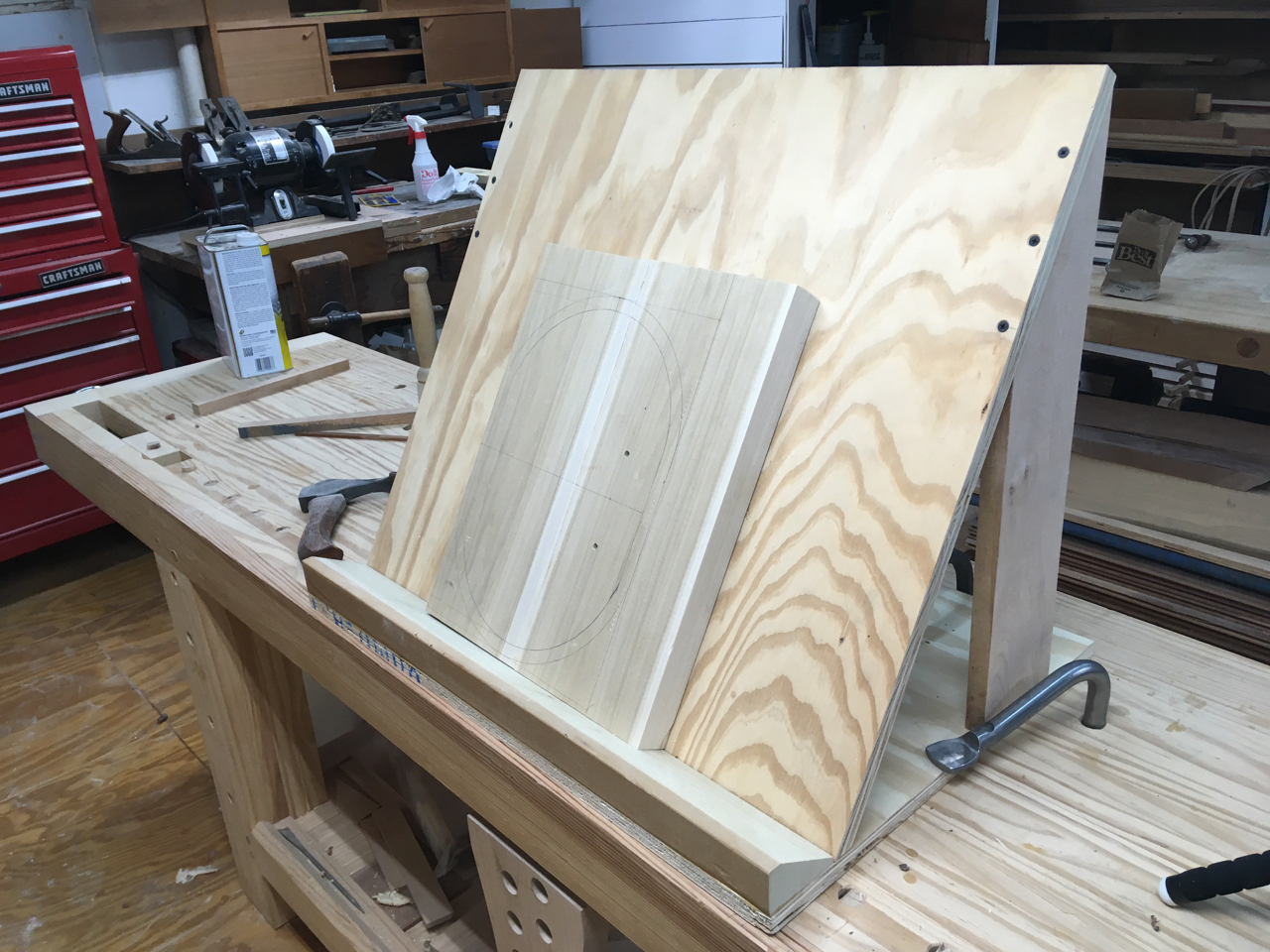
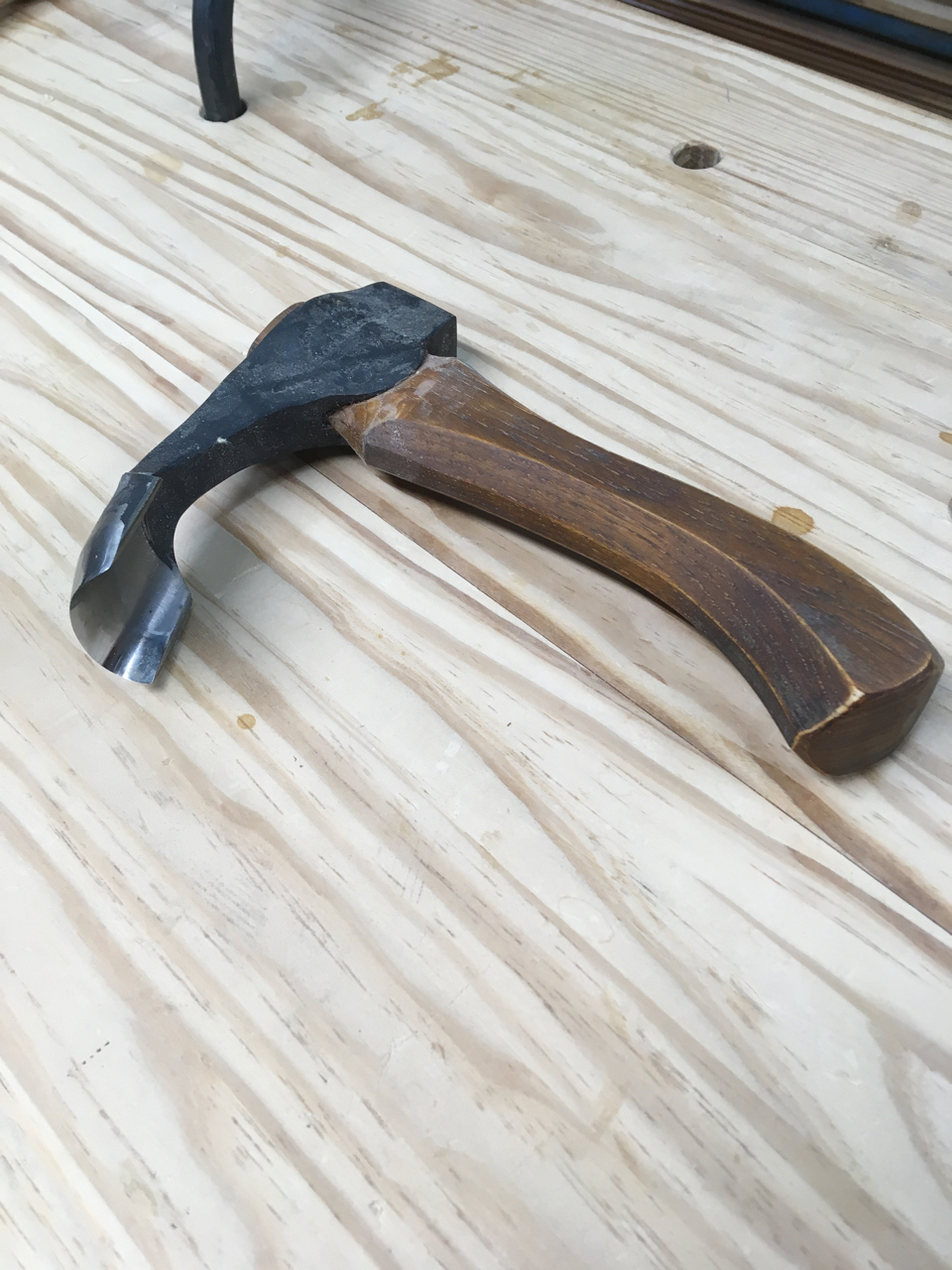
It was oddly familiar to use an adze, since the heft and motion is similar to weilding a hatchet. But the level of focus and precision I was trying to apply was definitely much higher. It was both terrifying and thrilling to use an adze for the first time. I am learning as I go, and I learned a lot. It didn’t take long before I had done as much as I could without possibly ruining the blank by going too deep or tearing out a chunk,
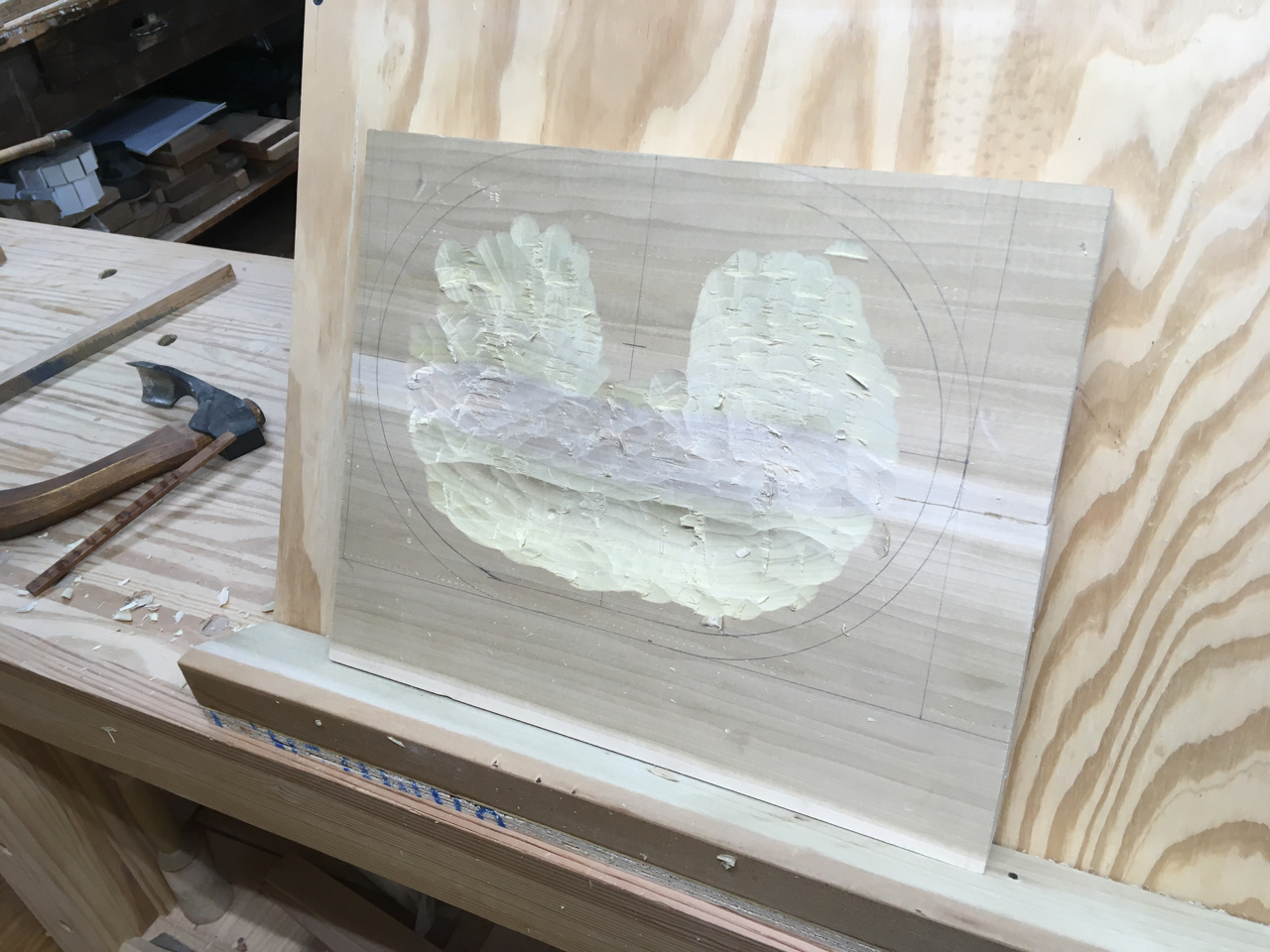
Happily, I have a workbench with holdfasts, and it made it easy to hold the seat blank in place for my next first: using the scorp to refine the shape of the hollow in the seat. Again, lots of learning, and after not too much time, I had made a lot of shavings and a lot of progress.
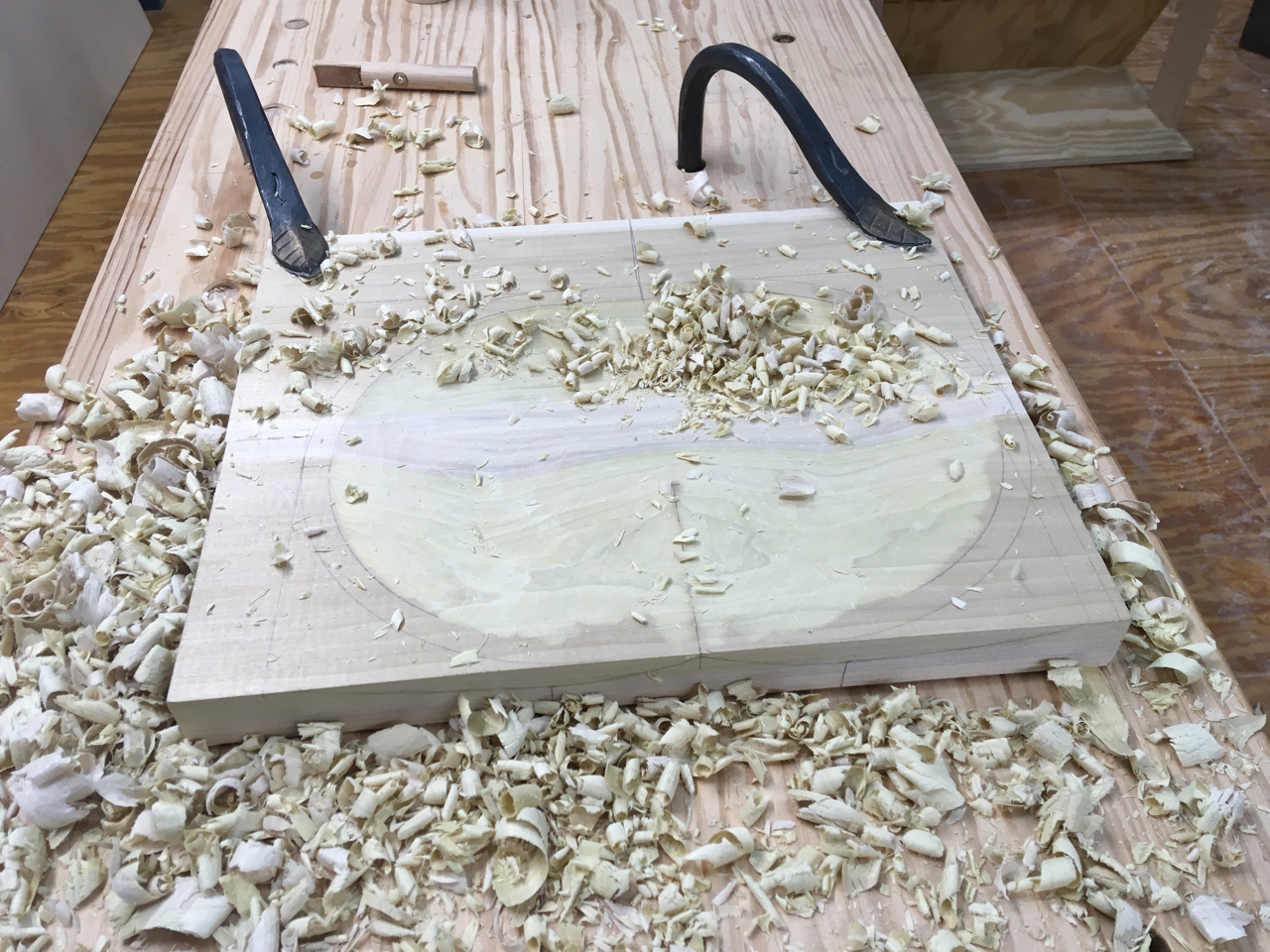
I took the seat blank to the bandsaw and took off the front corners, to give me a better edge to look at while continuing to refine the hollow. The hollow is asymmetrical in a bunch of ways, but some lines provided guidance. In his video on carving the seat with an adze and scorp, Curtis Buchanan talks about how when working with a scorp “the wood will tell you” which way to work. I was so happy when I could feel right away what he means. Of course I made mistakes, but since I was intentionally working slowly, there weren’t any mistakes I couldn’t correct (so far at least). The learning curve is incredibly fast with the scorp. I know so much more after just an hour or two with it. It’s a wonderful tool, capable of exquisite precision and with extremely good feedback to the wielder. It’s a joy to use; so satisfying to have such a direct, tactile engagement with the wood.
I’ve taken the hollow as far as I’m comfortable doing before I carve the sweeps on the front corners (which accomodate the back of your legs when sitting on it).
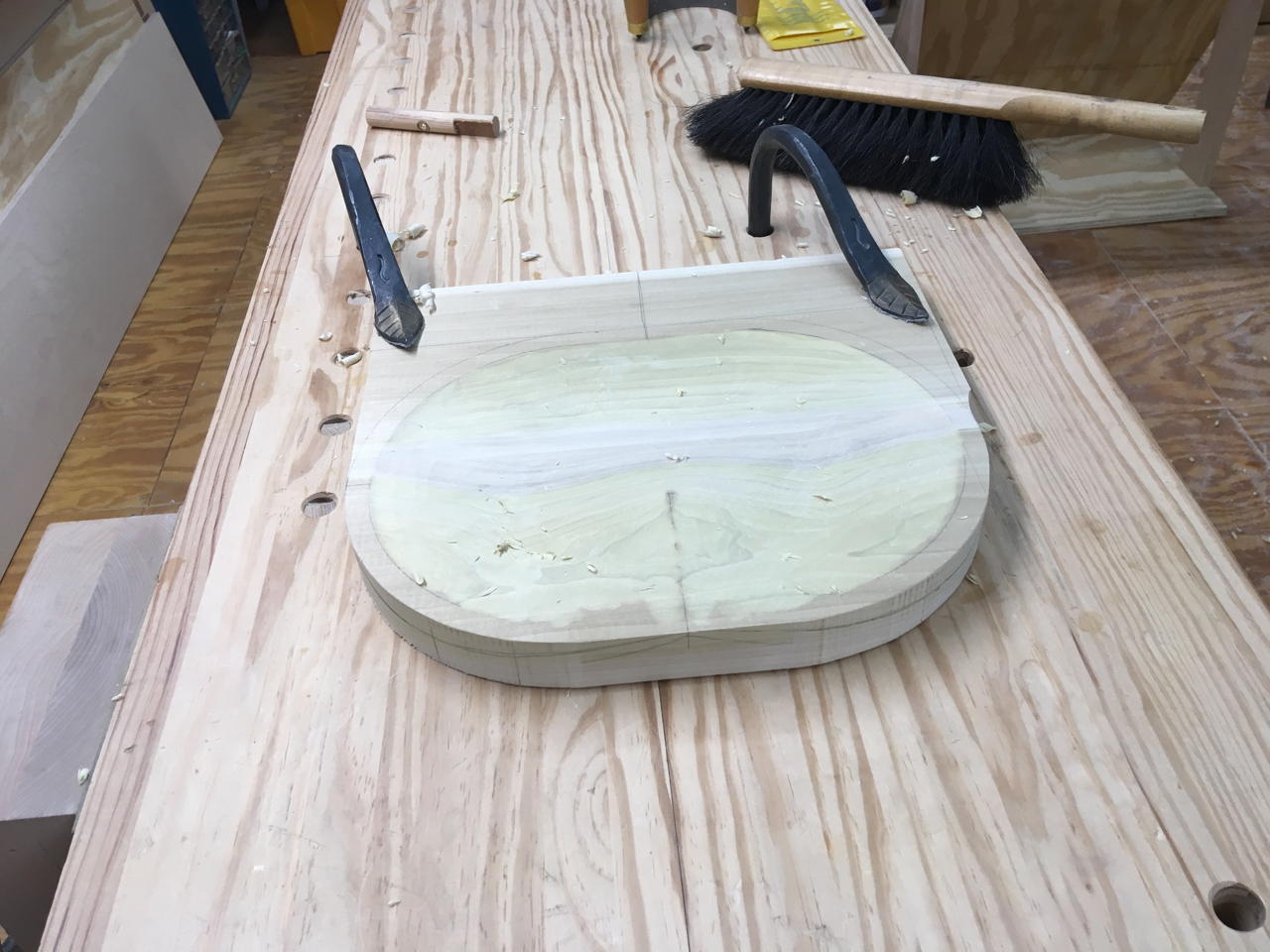
Of course, carving those sweeps requires a sharp drawknife. I have three, but none of them are sharp. So my next step will be sharpening a drawknife properly, so I can carve the sweeps and finish the hollow on the seat.